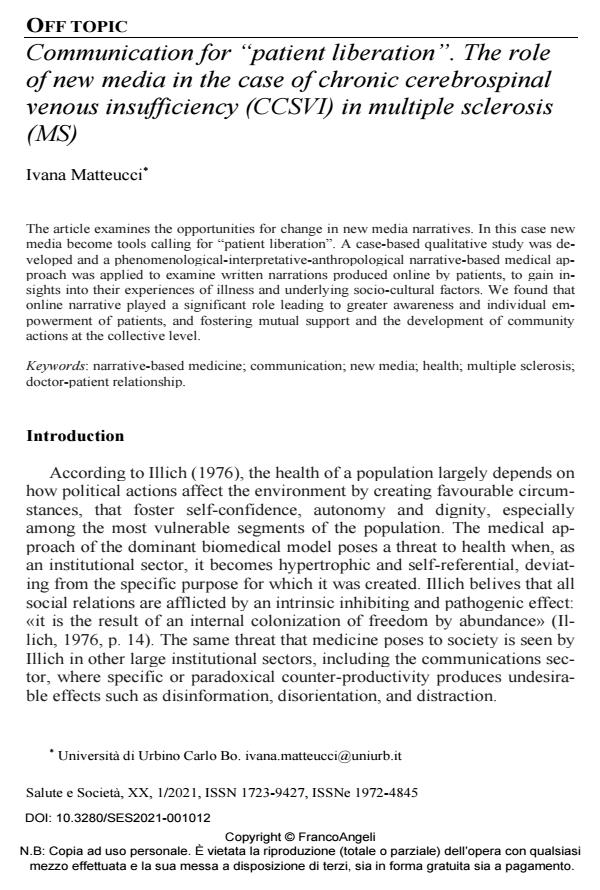Communication for "patient liberation". The role of new media in the case of chronic cerebrospinal venous insufficiency (CCSVI) in multiple sclerosis (MS)
Titolo Rivista SALUTE E SOCIETÀ
Autori/Curatori Ivana Matteucci
Anno di pubblicazione 2021 Fascicolo 2021/1
Lingua Italiano Numero pagine 15 P. 165-179 Dimensione file 420 KB
DOI 10.3280/SES2021-001012
Il DOI è il codice a barre della proprietà intellettuale: per saperne di più
clicca qui
Qui sotto puoi vedere in anteprima la prima pagina di questo articolo.
Se questo articolo ti interessa, lo puoi acquistare (e scaricare in formato pdf) seguendo le facili indicazioni per acquistare il download credit. Acquista Download Credits per scaricare questo Articolo in formato PDF

FrancoAngeli è membro della Publishers International Linking Association, Inc (PILA)associazione indipendente e non profit per facilitare (attraverso i servizi tecnologici implementati da CrossRef.org) l’accesso degli studiosi ai contenuti digitali nelle pubblicazioni professionali e scientifiche
The article examines the opportunities for change in new media narratives. In this case new media become tools calling for "patient liberation". A case-based qualitative study was devel-oped and a phenomenological-interpretative-anthropological narrative-based medical approach was applied to examine written narrations produced online by patients, to gain insights into their experiences of illness and underlying socio-cultural factors. We found that online narra-tive played a significant role leading to greater awareness and individual empowerment of pa-tients, and fostering mutual support and the development of community actions at the collec-tive level.
Parole chiave:Narrative-based medicine; communication; new media; health; multiple sclerosis; doctor-patient relationship.
- The Impact of New Entrepreneurial Spirit on Cultivating Entrepreneurial Values and Entrepreneurial Ability of College Students Ping Li, Xiaozhou Chen, in Frontiers in Psychology 870455/2022
DOI: 10.3389/fpsyg.2022.870455
Ivana Matteucci, Communication for "patient liberation". The role of new media in the case of chronic cerebrospinal venous insufficiency (CCSVI) in multiple sclerosis (MS) in "SALUTE E SOCIETÀ" 1/2021, pp 165-179, DOI: 10.3280/SES2021-001012